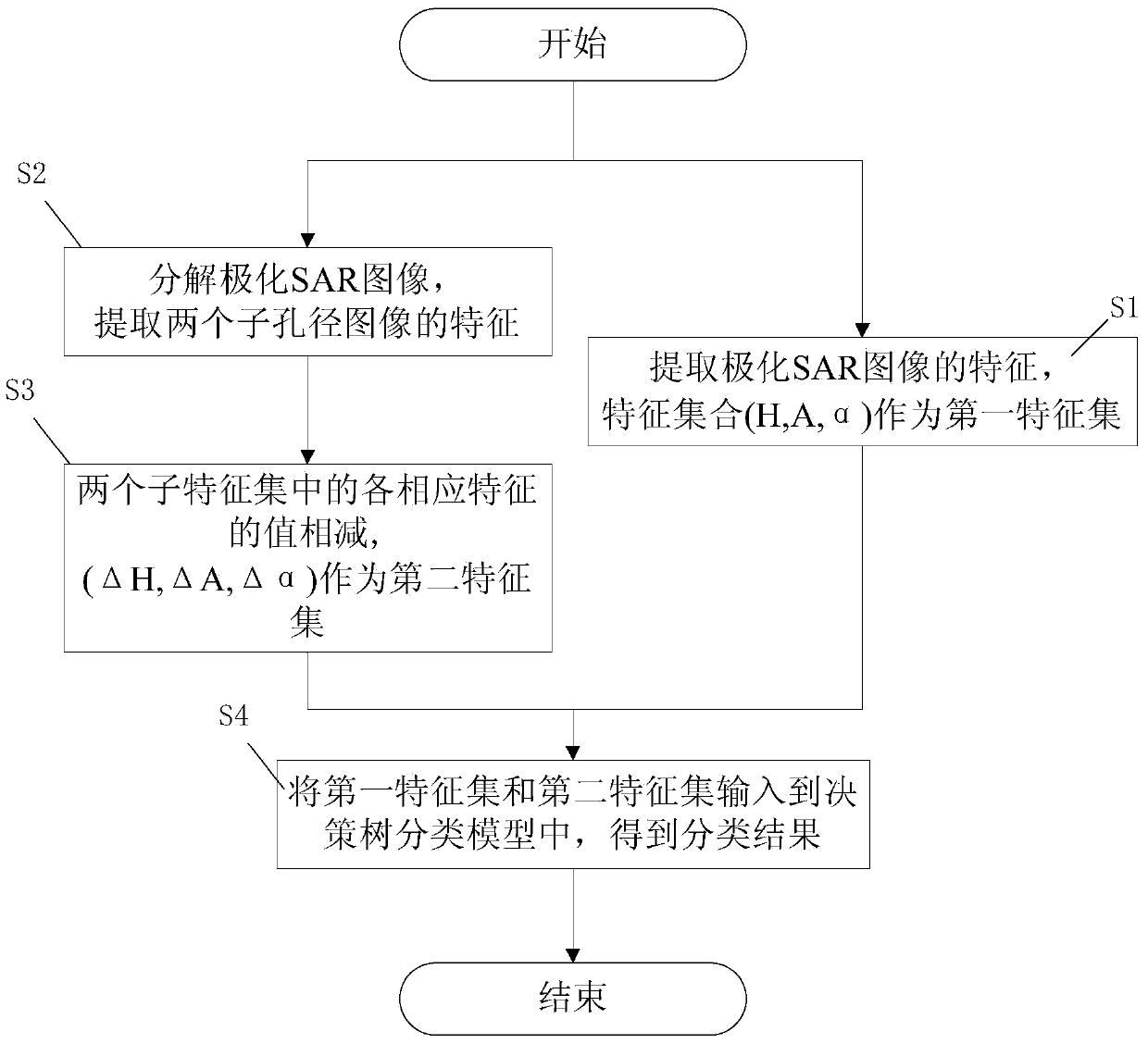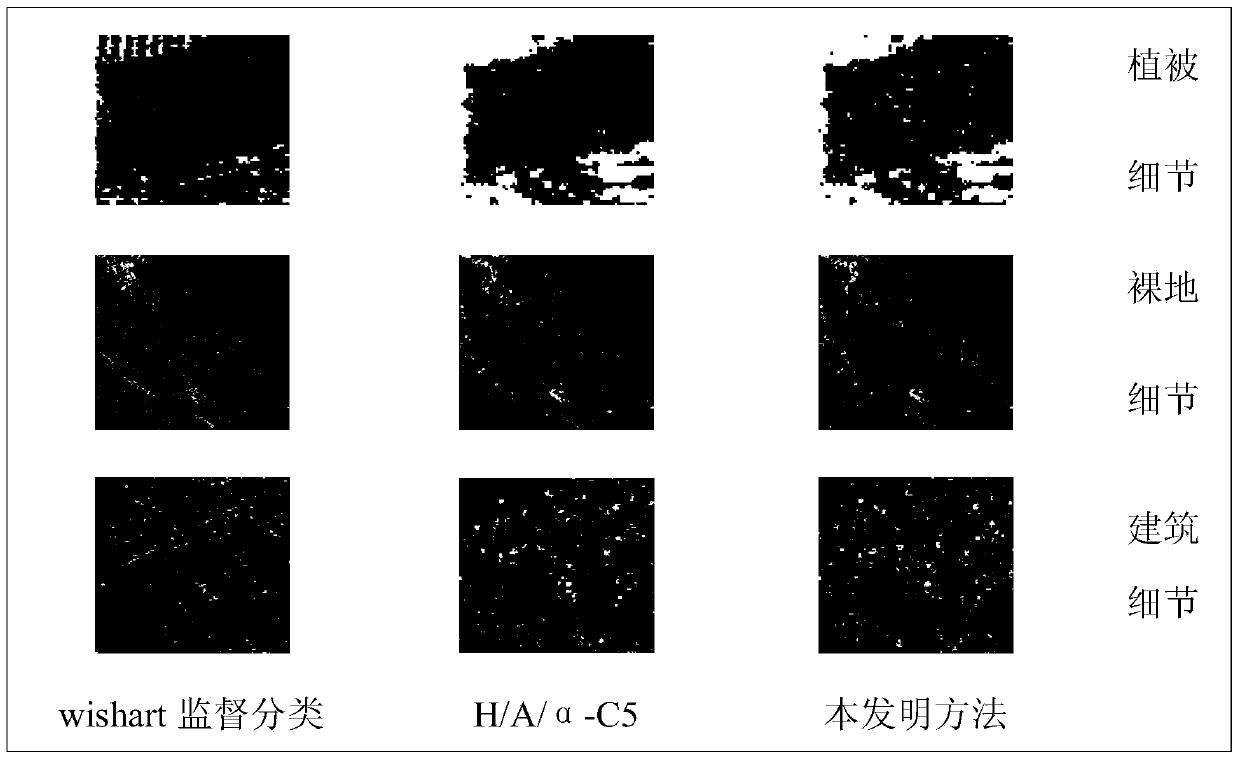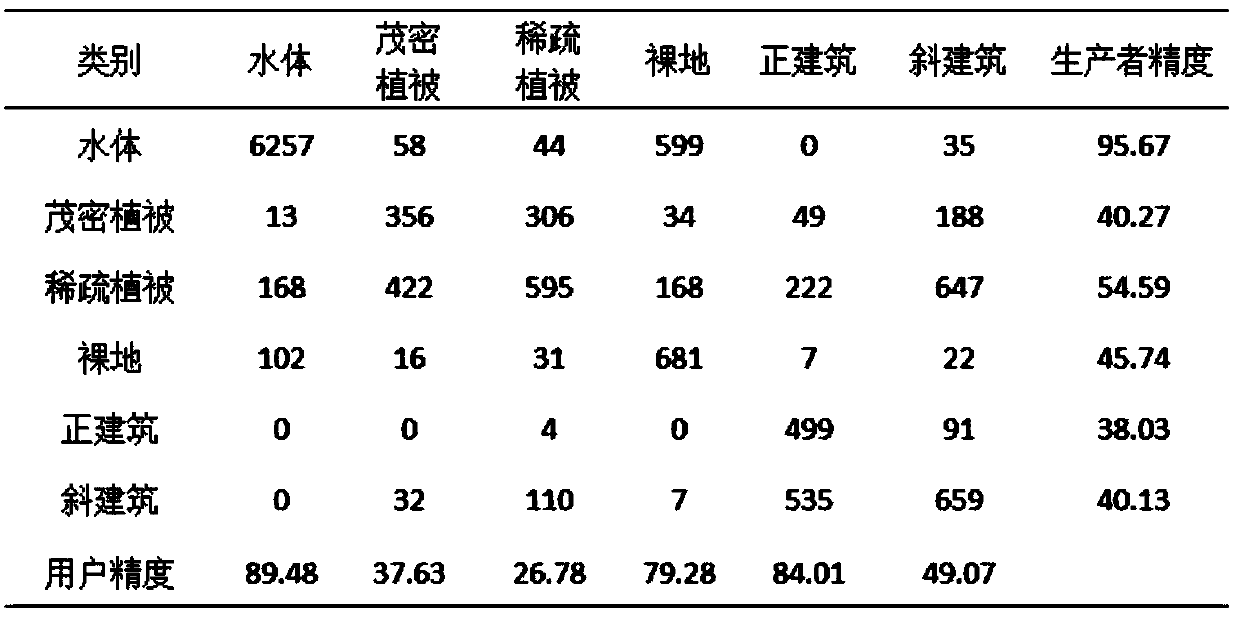Polarized SAR (Synthetic Aperture Radar) image classifying method
A classification method and image technology, applied in the field of image processing, can solve the problems of difficult interpretation of classification rules, lower resolution sub-aperture, limited classification accuracy, etc., to ensure ground spatial resolution, ensure classification accuracy, and good classification performance Effect
- Summary
- Abstract
- Description
- Claims
- Application Information
AI Technical Summary
Problems solved by technology
Method used
Image
Examples
Embodiment Construction
[0016] In order to enable those skilled in the art to better understand the present invention, the embodiments of the present invention will be described in detail below with reference to the accompanying drawings.
[0017] figure 1 is a schematic flowchart of a method for classifying polarimetric SAR images according to an embodiment of the present invention. see figure 1 , the polarimetric SAR image classification method of the embodiment of the present invention, comprising: S1: extracting the features of the polarimetric SAR image: scattering entropy H, anti-entropy A, and scattering angle α, and the obtained feature set (H, A, α) As the first feature set; S2: After decomposing the polarimetric SAR image into two sub-aperture images, the features of the two sub-aperture images are extracted respectively: scattering entropy H, anti-entropy A and scattering angle α, thus obtaining two sub-feature sets (H 1 ,A 1 ,α 1 ), (H 2 ,A 2 ,α 2 ); S3: Subtract the values of th...
PUM
 Login to View More
Login to View More Abstract
Description
Claims
Application Information
 Login to View More
Login to View More - R&D
- Intellectual Property
- Life Sciences
- Materials
- Tech Scout
- Unparalleled Data Quality
- Higher Quality Content
- 60% Fewer Hallucinations
Browse by: Latest US Patents, China's latest patents, Technical Efficacy Thesaurus, Application Domain, Technology Topic, Popular Technical Reports.
© 2025 PatSnap. All rights reserved.Legal|Privacy policy|Modern Slavery Act Transparency Statement|Sitemap|About US| Contact US: help@patsnap.com



